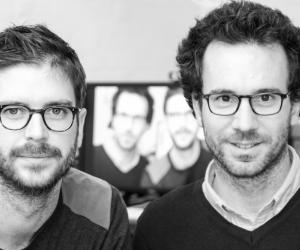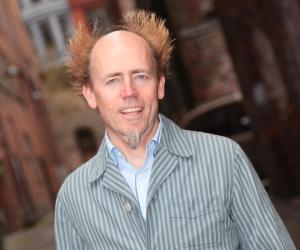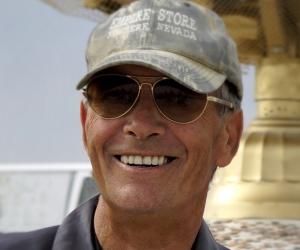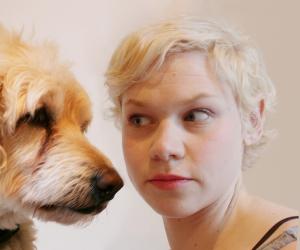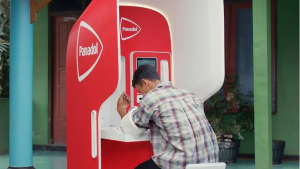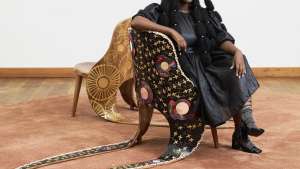From the Series
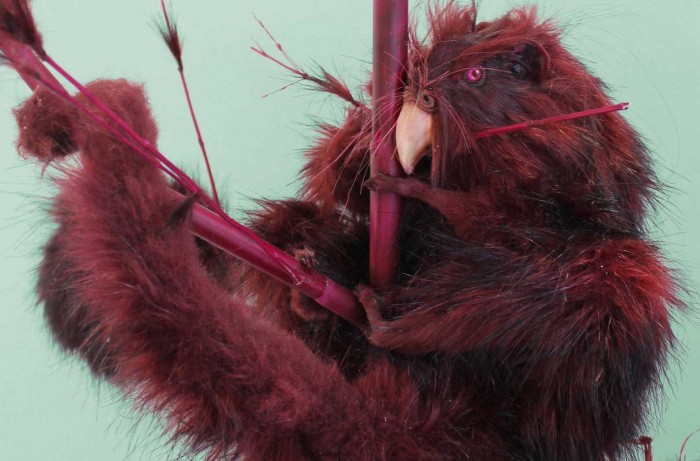
Day one of creative conference Design Indaba featured a look at some bizarre and thought-provoking projects by emerging designers, Burning Man co-founder Larry Harvey's reflections on collaborative art and creating great visitor experiences, a How To of graphic design from Pentagram's Michael Bierut and a talk from The Workers, the London design studio behind Tate After Dark. Here are some of the highlights...
The Workers
Ross Cairns and Tommaso Lanza, founders of London-based design studio The Workers, spoke about their IK Prize-winning project, Tate After Dark (the studio created a series of robots which roamed Tate Britain at night, which would be operated remotely via a website. A live feed of the robots travels was broadcast online, with commentary from Tate experts).
As well as helping the museum's collection reach a global audience, the project had a huge response online, with 33,000 tweets and 100,000 visitors, while 500 people were given the chance to operate a robot. Cairns said the project was inspired by research the studio had undertaken into how museums can digitally enhance exhibitions and aimed to recreate the sense of wonder at being alone in a museum at night.
"Being in a museum after hours, when all the visitors have gone, completely changes your perception of the space. We wanted to digitally recreate that feeling of having the space to yourself, and being in there when you're not supposed to."
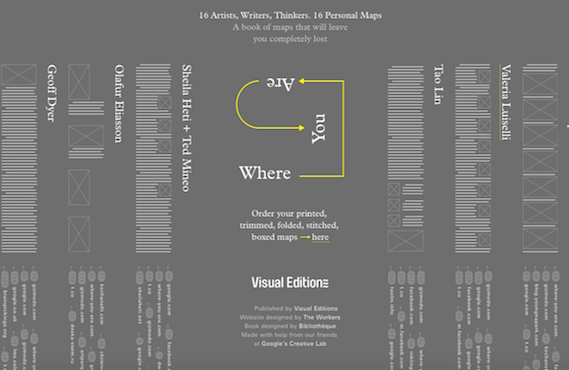
The pair also presented their work for Where You Are, a collection of 16 texts by different writers and artists exploring the idea of maps. To promote the book online, the studio created a website, where-you-are.com, designed to reflect the collective experience of reading a website (a homepage features yellow boxes to indicate paragraphs other users are reading at the same time, as well as where the site has been linked to). The site contains 16 microsites, one for each essay, with each featuring a different visual treatment.
With a practice spanning industrial design, graphics and experience design, Cairns said the studio's practice was tricky to sum up but added: "We love digital tech and trying to use it in surprising ways...digital technology is so accessible now, and we want people to realise the opportunities that are there."
Stanley Hainsworth
Stanley Hainsworth, former creative director at Lego, Nike and Starbucks, spoke about creating his own opportunities, from co-founding a beauty brand to launching a gallery space and setting up his own agency, Tether Inc.
After working as an actor and setting up his own production company and theatre, Hainsworth joined Nike's creative department in the early 1990s with no previous design or art direction experience.
"Nike was like a giant creative playground for me," he said. "We didn't have computers in the office then, so I went out on photo shoots, I learned about graphic design, product design, industrial design." It was this experience that led to him creating swoosh entertainment (branded games and video content) for Nike in the 90s, and launching a shoe for the brand in a New York art gallery back in 2000.
Since launching Tether, he has designed branding for youth charity Free the Children and its annual WE Day event, new packaging for Gatorade inspired by athletic physiques, an identity for caffeinated chocolate bar Awake and co-founded Tatcha, a cosmetics brand based on ancient Japanese beauty rituals, which he set up with Victoria Tsai, a former colleague at Starbucks.
A key part of his success, he said, has been seizing creative opportunities outside of his work. "You should always have a project on the go and be making connections with people," he said. "When you see an opportunity, just grab it and do it, not because you've been asked to. That's what made the difference in my career," he added.
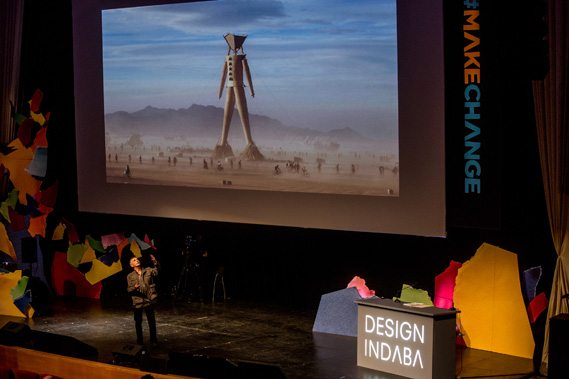
Larry Harvey
Larry Harvey, who founded arts festival Burning Man with Jerry James in 1986, spoke about the thinking behind the annual event in Nevada and its regional outposts (including one in Africa, AfrikaBurn).
Speaking about the inspiration for the festival, Harvey said he wanted to create a bohemian environment where people would collaborate and "absorb inspiration from one another".
"We turned a scene into a city, [it's been] 27 going on 28 years now and we're still going, there aren't many scenes that last that long," he said.
Criticising what he described as the over mediation of experiences today, Harvey said Burning Man aims to provide an interpretative experience for visitors: "We don't tell people what it means - you don't get a canned explanation, but you construct the experience yourself...We took the ethos of bohemia, [which is] so much about giving to one another...[and] we have a city teaming with gifts, interactions - and all of it pretty soulful and heartfelt. Its not that theres no money involved...but we start with an empty site, people bring things to it."
Picking out some of the most thought-provoking installations - from the Church Trapto a temple and the largest burning man effigy to date, he described the festivals approach to creative projects as seting a new standard for public art: "We hve made art that is interactive, has a social purpose, requires people to collaborate on creating and funding it, and isn't finished until people interact with it," he said. The festival has a $30 million budget, with $1.2 million given out in grants to artists, but Harvey said many more also receive vast donations via crowdfunding.
With the festival now attracting over 70,000 people evey year, Burning Man is also workingto create regional outpost events to "unite people of diverse backgrounds" and showcase creativity from various parts of the world.
"That's what we think the world needs, and we think we can scale it," he added.
Hella Jongerius
Hella Jongerius also spoke about designing the new business class lounge for Dutch airline KLM and a lounge space for the UN - as well as why she thinks the design industry produces "too much shit" today - while Pepe Marais and Xolisa Dyeshana of South African ad agency Joe Public discussed some interesting educational projects plus commercial work for Nike Run, car trackers and Dial Direct. The agency has launched a fundraising campaign for educational initiative Project English, which is campaigning for South African schools to teach English as a first language (it is currently taught as a second language in many, yet maths and science are taught in English). Joe Public ran a series of radio ads documenting one child's experience of learning English and how it improved her overall performance at school.
Global design graduates
Global design graduates, too, presented some bizarre, inventive and thought-provoking projects - Teresa Van Dongen's Ambio light uses bioluminscent bacteria from the skin of an octopus, and requires no electricity:
Interaction designer Marc duBois, co-founder of studio fragment.in, discussed his gaming consoles, which use simple shapes and Ikea-style instructuion leaflets to offer a different way to experience games, and encourage people to make their own,
as well as OccultUs, an experiment where participants are placed in a 3D virtual world via an Oculus headset and exposed to sudden noises such as shattering glass in the room around them. Its an area du bois says he is keen to explore further, he says.
Another graduate, Carla Kreuser, offered a lovely insight into illustrating for poetry, reflecting on her work for poem The Boy With The Fire in His Boot - "Poetry works so well - I wanted to add something, revealing secrets about the story that the words haven't told us yet, or things that the text couldn't or wouldn't say," she said. Kreuser also created the cut-out illustrations used in this year's Indaba creative campaign.

And Kathryn Fleming from the RCA discussed her brilliantly bizarre Endless Speciesproject, which considers how we night be able to use design to save the animal kingdom, ceeating hybrid creatures that can survive in today's natural environments. Fleming has also created an orchid that detects human pheromones and changes colour if a person in the room is ovulating.
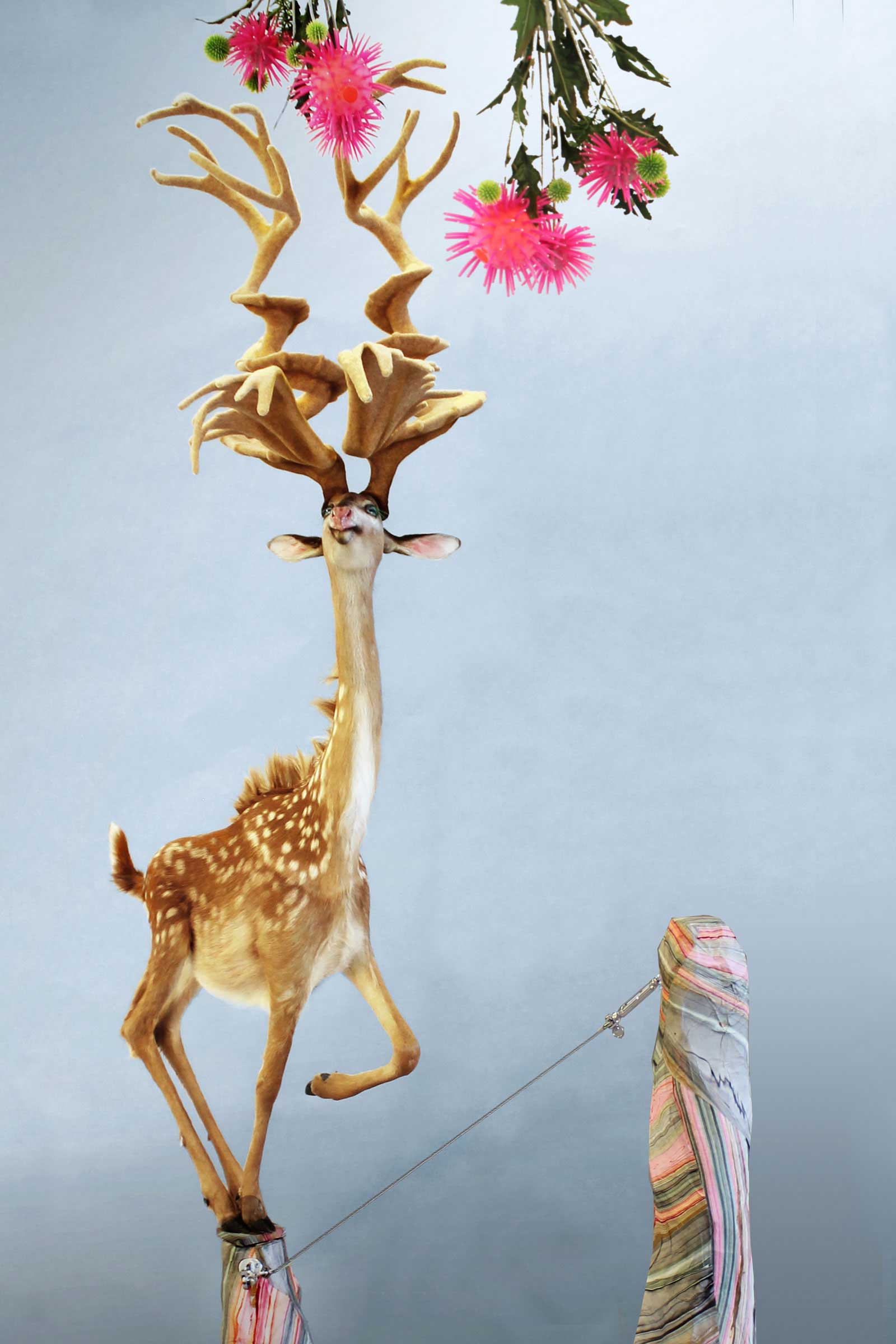
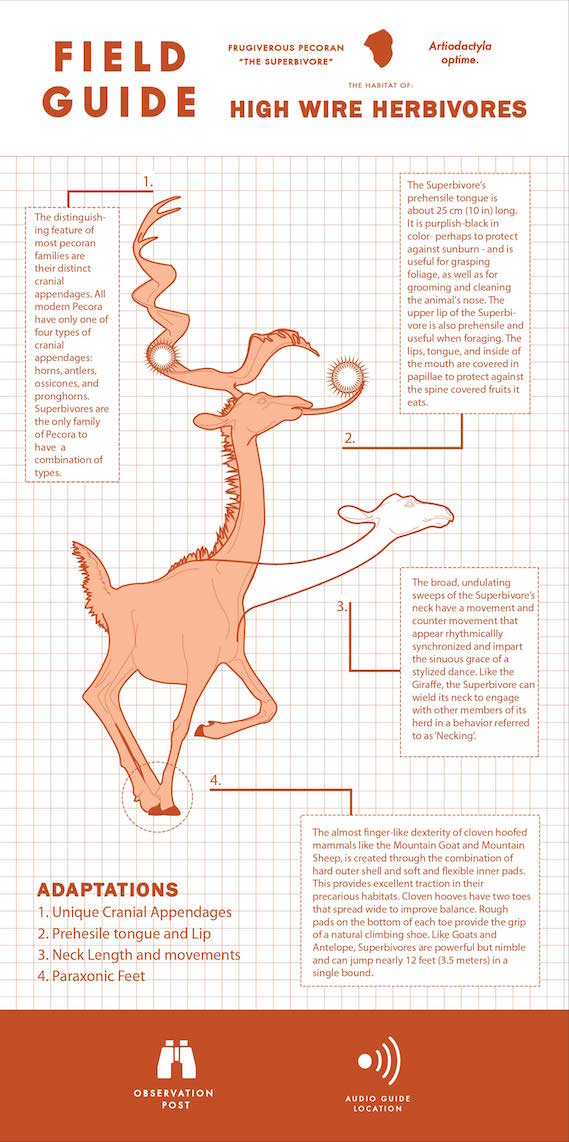
The day ended with a witty talk from Pentagram Partner and Design Indaba MC Michael Bierut, who discussed creating an identity for MIT Media Lab, online nut retailer nuts.com and a signage system for New York - as well some amusing typographic signage for Cathedral Church of Saint John the Divine. As well as discussing the thinking and process behind various projects, and offering some words of wisdom, such as when to "shut up and listen" to clients if they don't like an idea, he announced a new book, How To: Use graphic design to sell things, explain things, make things look better, which will soon be available to pre-order on Amazon.
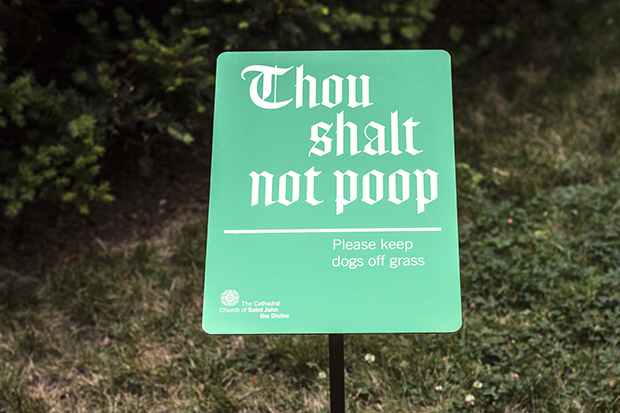
Tomorrow's speakers include Nando's founder Robbie Brozin, Rosita Misson and Roy Choi, founder of Korean food truck Kogi. You can follow events using the hashtag #designindaba or see designindaba.com for more info about the conference.


